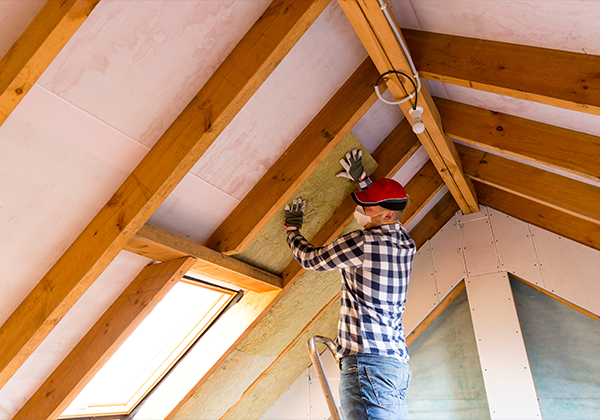Renovate your roof with the right insulation for a Canadian climate
October 27, 2025
Canada’s climate ranges from the arid deserts of the Okanagan to the misty coastlines of St. John’s, and if you’re thinking of replacing your building’s roof insulation, it’s important to invest in materials that can withstand local weather patterns.
There are different types of roof insulation, and when selecting which materials to use for your project, you’ll need to consider regional factors like humidity, temperature, and if your area is prone to any extreme weather events like tornados, floods, or wildfires.
You’ll also want to be aware of how frequently the weather can fluctuate. With the wrong insulation, sudden changes blown in by Chinook winds or mid-summer snowfalls can cause problems like attic rain.
So, how to determine which roof insulation works best for your climate?

Types of Roof Insulation
To get the most out of your investment, you may want to consult a professional while considering which roof insulation to purchase. It’s also important to note that some types of insulation are easier to install than others, so it may be best to hire a pro to get the job done.
That said, here is an overview of roof insulation materials to choose from:
- Blanket or batt insulation: Popular and versatile, this relatively inexpensive insulation is sold at most hardware stores and can be cut to fit or purchased in standard pre-measured batts or rolls. It frequently comes in fiberglass, cellulose, plastic fibers, and natural fibers, including wool and cotton.
- Loose insulation: Loose-fill, or blown-in, insulation is made up of small particles of foam or fibre made of materials like fiberglass, rockwool, and cellulose. Because of its loose structure, it fits into existing finished spaces and awkwardly shaped or hard-to-reach areas.
- Foam or rigid boards: These unyielding insulation panels are made from closed-cell foam, usually polystyrene or mineral wool, and are especially effective in exterior wall sheathing and interior sheathing for basement walls.
- Spray foam: Often made with polyurethane, spray foam insulation comes in two forms. Open-cell foams are more cost-effective and are filled with air that gives them a sponge-like texture. Closed-cell foams are denser because they are filled with gas that helps the foam expand to fill the spaces around it.
Get to Know Your Climate Zone
In addition to how they fit in space, the major difference between roof insulation types is their R-value, or how effective they are at resisting thermal heat transfer. The higher the R-value, the greater the insulating power.
Depending on where your property sits, it will fall under a national or provincial building code that identifies climate zones and establishes thermal resistance requirements for each, helping you take some of the guesswork out of the purchasing process.
The National Building Code of Canada divides the country into six climate zones. Because most of the country experiences colder climates, required R-values for ceilings below attics range between R-40 and R-60, and most commonly use blanket or blown-in insulation that fits in hard-to-reach places and forms an air barrier that prevents heat from escaping. Cathedral ceilings and flat roofs typically require batt insulation of R-31, plus foam boards with an R-value of five to 10.
In hot climates where the goal is to keep cold, air-conditioned air, blanket or loose-fill insulation with an R-value between 30 and 49 is recommended, depending on the specific area.
Humid climates, like you might find along the temperate coasts of British Columbia, typically use fiberglass, which is the best option for homes in humid areas, as it is not only fire-resistant but also water-resistant.
For roofs in more extreme climates — like the extreme cold of the far north, wildfire-prone regions, or areas that experience hurricanes and tornadoes — you may consider fire-resistant insulation boards made of fibre cement.
Structural insulated panels (SIPs) are another extremely durable option; however, they are not designed to get wet, so a vapor barrier is recommended.
Which Insulation Is Best for Your Roof?
Not only does the right kind of roof insulation prevent mould from forming and spreading throughout your building — it also regulates the temperature, keeping you comfortable and the energy bill low.
Whether you live in a frigid, polar climate or a mild, Mediterranean part of Canada, do your research and work with a professional to make sure your roof insulation will withstand the elements.